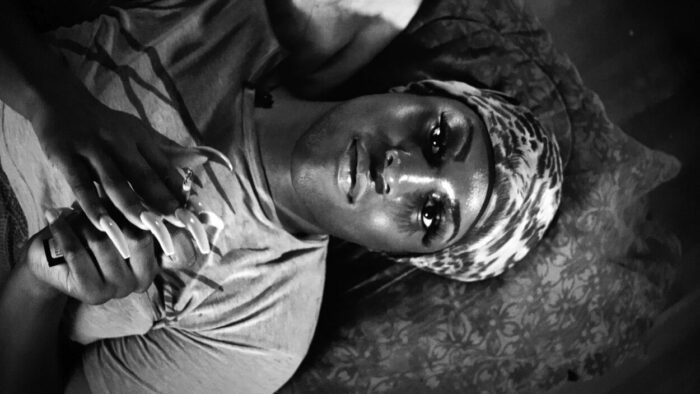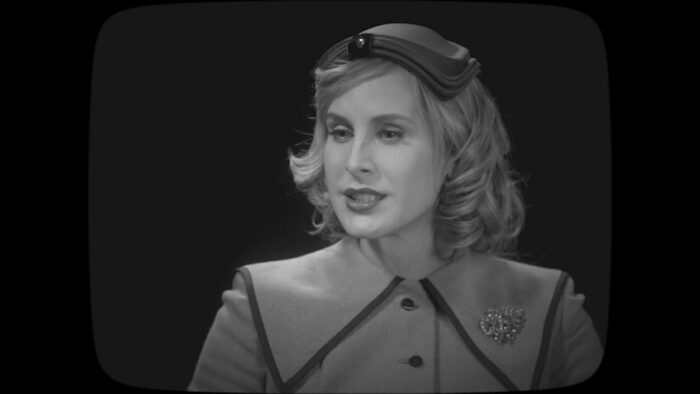It’s not always enough to tell stories with trans characters. While representation is fantastic, stories by trans people about our lives are always fundamentally different from the ones told by cisgender people for cisgender audiences. As part of Pride Month this year, it seems only apt to highlight recent films from transgender directors about the lives of transgender people.

The People’s Joker (2022)
Equal parts a trans-coming-of-age story and parody of the DC Universe (a little more Scary Movie than Airplane), Vera Drew’s The People’s Joker may still be difficult to find, with a physical release only just announced, but is more than worth the effort. It’s rare for a film so personal to also so openly point and laugh at the art that inspired its creator.
It’s difficult to say anything about The People’s Joker that can capture the experience of actually watching it. Coming from the contributions of dozens of artists, complete with their own styles and influences, the film is as much a mixed-media art piece as it is a traditional narrative of self-discovery. Some films just have to be seen to be understood, and Drew’s work is among them.
Perhaps more so than some other films on this list, The People’s Joker is a piece that is queer in both form and subject matter. It’s undeniably very messy, but in such a way that it appears intentional, adding to its nature as a guerrilla art piece. Sure, there are green screen artifacts visible, some jarring changes in art style, and low-budget effects and shots, but ironing out all of these perceived flaws would make a fundamentally very different movie and not one that works as well as this does.

Kokomo City (2023)
While it may have “Street Life” playing over the opening credits, make no mistake, this isn’t anything close to Sharky’s Machine.
Smith’s Kokomo City follows four different transgender sex workers as they recount stories and show what a day is like in each of their lives. Documenting the lived reality of many trans women in particular, Smith shows an important part of the trans experience by following trans sex workers of color specifically.
It’s no secret that transgender women of color are particularly vulnerable and open to exploitation, and coming from D. Smith’s own history of falling out of favor with the music industry after coming out, the film clearly comes from a personal place. While she may not be opening up about her own personal experiences on camera, the subject matter and presentation alone scream with intention. Following these women around with a handheld camera almost makes every moment more intimate, as if you’re in the room with them and just happened to start recording in the middle of a conversation.
Covering everything from shaving techniques to sex, Kokomo City shines a useful spotlight on a side of life that many cis people may not be aware of. While there are plenty of easily available films about the other parts of being transgender, realization, coming out, and facing family, there are far fewer films that cover just living as trans.

Mutt (2023)
In some ways more tragic than the rest of this list, Vuk Lungulov-Klotz’s Mutt is a glimpse of just 24 hours in a trans man’s life. It’s hectic, filled with escalating mishaps, and shows just how easy it is for someone made open to exploitation to have one small problem grow into many, many more. Feña (Lio Mehiel) isn’t someone in a fictional world but grounded in our own, watching as everything happens to and around him.
As time goes on, Feña seems more and more trapped, boxed in both by the aspect ratio and the film’s blocking. Constantly, he and the rest of his world are made to stay within the lens of a static camera, confined to the borders it sets. Emphasizing how much Feña is trapped by the circumstances surrounding him, the sometimes voyeuristic shots come across as not only a way of showing his inability to break out of the cycle he’s in but also show how others view his body and the physical aspects of his transness.
Lungulov-Klotz captures so many fundamental aspects of the trans experience in Mutt. The importance of community is all over, with Feña constantly going to others for help. There is a wonderfully mixed reception from family members, showing that not every family is monolithic in their acceptance and approach to a trans child. Even the smaller aspects, with Feña’s wardrobe being seemingly pulled right out of the closet of every trans man. Mutt manages to be a story both utterly unique and intimately familiar to many who have had to navigate a life like Feña’s.

Framing Agnes (2022)
Taking a more historical perspective, Chase Joynt’s Framing Agnes centers around the various ways that transgender people have had to work to acquire treatment and live their lives in peace.
Working through a series of interviews with various transgender individuals from different points in time, Framing Agnes specifically focuses on the story of the aforementioned Agnes who was part of Harold Garfinkel’s research at UCLA in the 1960’s. While it may have thrown off Garfinkel’s research, Agnes also famously lied at the beginning of the study in order to access care.
Filled with talk show reenactments of real interviews and the perspectives of their actors and historians, Framing Agnes is a film that is focused not on the history of all transgender people, but on a few select examples that can be used to better understand the whole. There are no sweeping generalizations, only a few people’s experiences and the reasonable conclusions one can draw from them.
The direct inspiration for these reenactments to be done in this way seemingly comes from an unfortunate interview in which Katie Couric repeatedly asked invasive questions about the physical transitions of Laverne Cox and Carmen Carrera. Much like Couric, Garfinkel’s questions, read by director Chase Joynt, were invasive and often guiding subjects towards a certain answer, something most were aware of and attempted to work around in their own ways.

I Saw The TV Glow (2024)
Jane Schoenbrun’s I Saw The TV Glow has made quite the buzz recently, with its 90s TV love letter turned trans allegory currently available for all to see in theaters. Clearly coming from a place of love for the work of the era, TV Glow follows the story of Owen (Justice Smith) as he navigates decades of his life – staying enamored with the show “The Pink Opaque.”
While many other pieces of trans art focus on transgender protagonists earlier in their lives, Shoenbrun places a particular emphasis on the idea that it’s never too late to come out. All throughout the film, there are reminders that there is still time, and it’s not too late to change yourself and the life you have.
While Owen struggles with figuring many things out, thanks to something of a spoiler that has to be seen to be believed, Maddy finds it much more naturally. There’s something so viscerally real about seeing a friend who is clearly struggling, and even as you try to help them, they still deny who they are and the solution that would help them.
It’s easy to compare this film to Schoenbrun’s We’re All Going to the World’s Fair, especially with their depictions of dysphoria and ostracization. What really gives I Saw The TV Glow a spot on this list is the message it carries, not one of misery but one of hope. As previously stated, it’s easy to work to find art depicting trans people who are in their teens and twenties, even though this isn’t a coming-out story, it’s important to see a depiction of something analogous in a character who is significantly older.

Desire Lines (2024)
Jules Rosskam’s Desire Lines functions perfectly as a companion piece to Mutt or Framing Agnes (Rosskam and Joynt did, in fact, consult with each other on their films). Another documentary to end this list, Desire Lines focuses on the specific history of transmasculine homosexuality and how trans men would navigate their lives as being part of not one, but two, marginalized groups.
Following an Iranian-American researcher played by Aden Hakimi, Desire Lines is full of dramatizations of lived reality, showing how these experiences are so familiar even as they grow more and more distant. Not to go without its own series of interviews, Rosskam spoke with several transmasculine people about their experiences with sex and sexuality, getting a range of answers and even juxtaposing them with historical context and experiences
Evenly splitting its documentary focus and original story, Desire Lines’ provides a much-needed focus on the history of trans people navigating spaces that are often specifically for cisgender gay men. It’s difficult to find stories like these, and to have them all nicely wrapped up together is absolutely incredible, and a must-see for any aspiring queer historian.



